When it comes to camping, selecting a suitable campsite can make or break your outdoor adventure. Choosing a suitable campsite is crucial for a successful and enjoyable camping experience. Unfortunately, many campers make common mistakes that can make their camping trip a nightmare.
Table Of Content
- Deciding on a campsite without researching the area beforehand
- Don’t skip your research!
- Consider the proximity to water sources.
- Beware of potential noise disturbances nearby.
- Consider the size and levelness of the camping area
- Overlooking the campsite’s proximity to water sources
- Why is water proximity important?
- What mistakes to avoid?
- Ignoring potential noise disturbances nearby
- Not researching the campsite surroundings
- Overlooking neighboring campers
- Ignoring potential wildlife disturbances
- Failing to Consider the Size and Levelness of the Camping Area
- Space for Your Equipment
- Level Ground
- Safety Considerations
- Accessible Amenities
- Privacy
- Not checking the accessibility and ease of reaching the campsite
- Why is accessibility important?
- Factors to consider when checking accessibility
- Forgetting to analyze the condition and availability of restroom facilities
- Why is this important?
- How to avoid this mistake?
- Disregarding the potential for bugs, mosquitoes, and other pests
- Not researching the local environment
- Ignoring the presence of standing water
- Neglecting to check for pest control measures
- Overlooking the importance of insect repellent
- Failing to secure your food properly
- Choosing a campsite without considering the weather conditions
- Not researching the climate of the area
- Ignoring the forecast
- Disregarding the microclimate of the campsite
- Not considering seasonal variations
- Underestimating the Importance of Adequate Shade and Shelter
- Choosing a Campsite without Tree Cover
- Ignoring Wind Direction and Exposure
- Not Considering the Size of Your Tent and Hammock
- Overlooking the Availability of Picnic Tables and Shelters
- Not Having Adequate Rain Protection
- Making assumptions about the availability of amenities and activities
- Not researching the amenities
- Overlooking activity options
- Not considering seasonal restrictions
- Failing to check for reservations
- Disregarding nearby attractions
- Frequently Asked Questions (FAQs)
- What are the top mistakes to avoid when selecting a campsite?
- 1. Is it a mistake to choose a campsite without proper research?
- 2. Can selecting a campsite without considering the weather be a mistake?
- 3. Is choosing a campsite that suits your camping style important?
- 4. How important is the campsite’s proximity to water sources?
- 5. Can selecting a campsite without considering the level of privacy be a mistake?
- 6. Is it a mistake to overlook the availability of shade at a campsite?
I have seen and learned from these mistakes as an expert camper. That is why I am here to guide you through selecting the perfect campsite. In this blog post, I will share the top 10 campsite selection mistakes to avoid. You can ensure a memorable and hassle-free camping experience by steering clear of these errors.
Join me as we explore the common pitfalls that campers often fall into. We will cover everything from overlooking essential amenities to disregarding important safety considerations. So, let’s dive in and discover how to choose the ideal campsite for your next outdoor adventure!
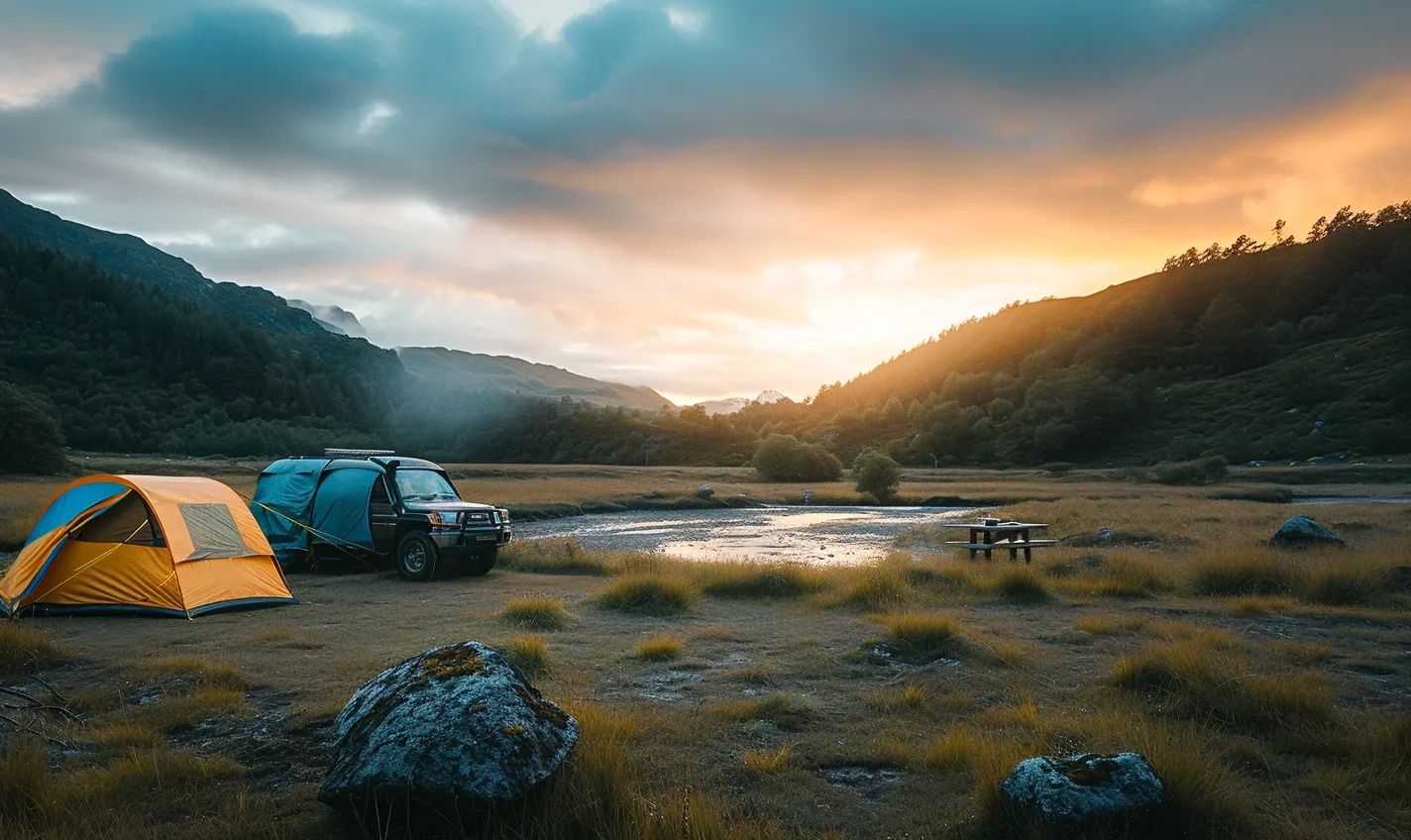
Deciding on a campsite without researching the area beforehand
When planning a camping trip, selecting the perfect campsite is one of the most crucial aspects. Your campsite can make or break your outdoor experience, so it’s essential to do homework before settling on a location. Here are some common mistakes to avoid when selecting your campsite:
Don’t skip your research!
Choosing a campsite without researching the area beforehand is a recipe for disaster. You may end up far from your desired attractions or activities. Take the time to research the area, including nearby hiking trails, fishing spots, or any other outdoor adventures you’re interested in. Look for reviews or ask fellow campers for recommendations; their insights can be invaluable.
Consider the proximity to water sources.
Water is essential during camping trips, whether it’s for drinking, cooking, or cleaning. Overlooking the campsite’s proximity to water sources can put you in a difficult situation. Ensure your chosen campsite is close to a freshwater source, such as a river or lake. If there isn’t one nearby, ensure you have a plan to access water during your stay.
Beware of potential noise disturbances nearby.
Picture this: you settle down for a peaceful night of sleep in your tent, only to be awoken by loud music or a nearby highway. Ignoring potential noise disturbances nearby can impact your camping experience. Check for any known noise sources in the area, such as highways, train tracks, or even neighboring campgrounds. Look for quieter regions or sites that provide some sound insulation.
Consider the size and levelness of the camping area
Another mistake campers often make is failing to consider the size and level of the camping area. Ensure the campsite accommodates your tent, camping gear, and any other equipment you plan to bring. A level surface is also essential for a comfortable sleep and easy setup. Uneven ground can cause discomfort and may even pose safety risks.
Avoiding these common campsite selection mistakes can ensure a more enjoyable and hassle-free camping experience. Take the time to research, consider your needs and preferences, and make an informed decision. Remember, a great campsite sets the stage for unforgettable outdoor adventures!
Overlooking the campsite’s proximity to water sources
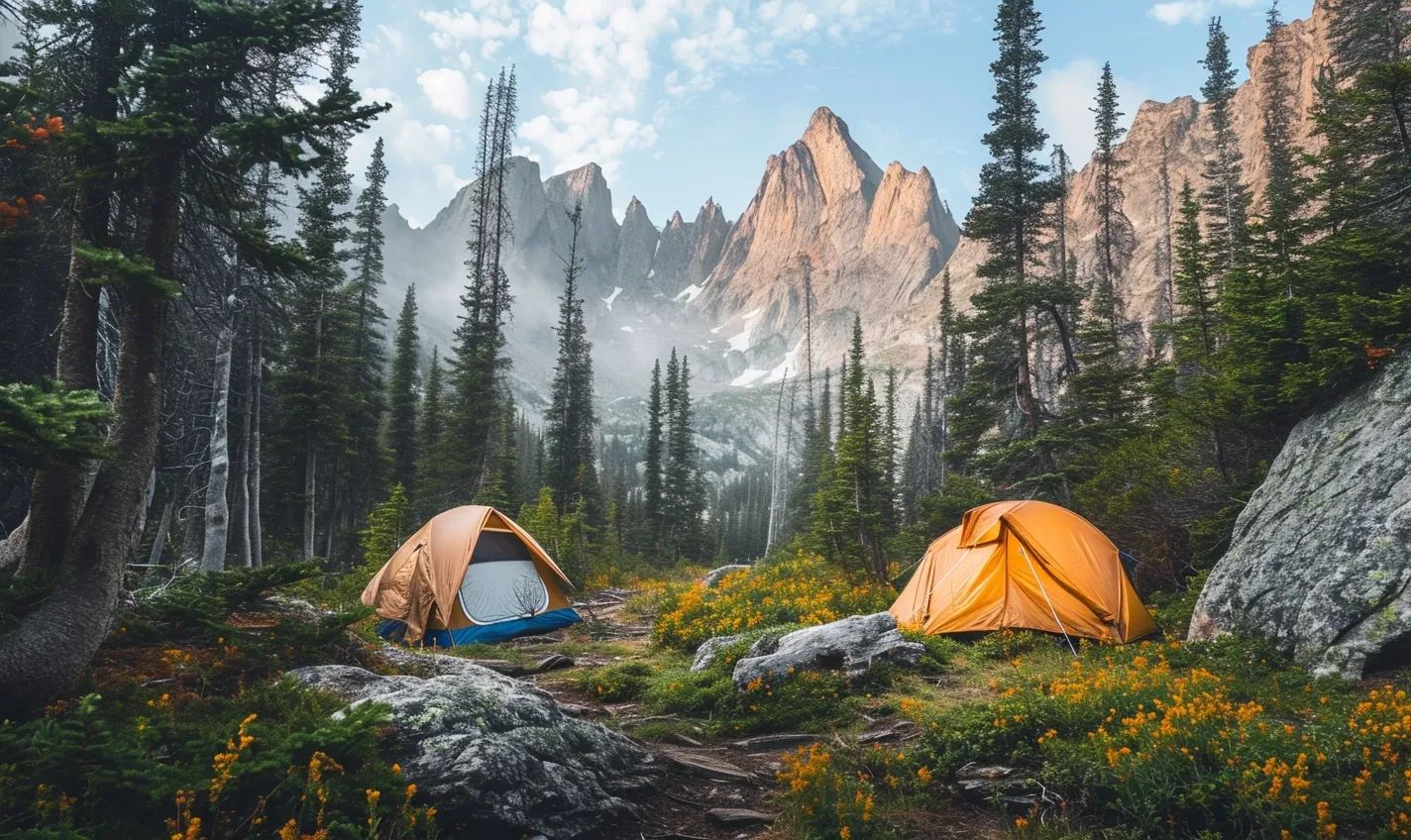
When selecting a campsite, many people focus on finding the perfect view or a spot that offers ample shade. While these factors are important, one key consideration that may often be overlooked is the campsite’s proximity to water sources. Choosing a camping spot without considering access to water can lead to an inconvenient and potentially challenging camping experience.
Why is water proximity important?
Easy access to water is essential for various camping activities, such as cooking, cleaning, and drinking. You may struggle to perform these crucial tasks without access to clean water. Additionally, being located near a water source can enhance your overall camping experience by providing opportunities for activities like fishing or swimming.
What mistakes to avoid?
To ensure you don’t overlook the importance of water proximity, here are some common mistakes to avoid:
- I did not research the campsite’s water availability before arrival.
- Check if the campsite offers potable water sources or if you need to bring your own.
- Look for any restrictions on water usage, such as conservation measures or boil advisories.
- Choosing a campsite far away from water sources.
- Consider the distance you’ll need to travel to access water for various activities.
- Think about the convenience of fetching water for cooking or cleaning purposes.
- Ignoring the quality of nearby water sources.
- Ensure that the available water sources are safe for consumption or if they require purification.
- Consider any potential risks or contaminants that could affect the water quality.
Ignoring potential noise disturbances nearby
Picture this: you’re nestled in your cozy sleeping bag, ready to drift into a peaceful slumber under the starry night sky. But wait, what’s that noise? Is it a nearby highway traffic or a boisterous group of campers partying late into the night? Ignoring potential noise disturbances can quickly turn your dream camping trip into a sleepless nightmare. Here are a few mistakes to avoid:
Not researching the campsite surroundings
.Before booking a campsite, it’s crucial to research the surroundings. Are there any busy roads, train tracks, or airports nearby? These could contribute to unwanted noise pollution that interrupts your peaceful camping experience. Take the time to find a campsite that offers a serene environment and minimal disruptions from outside noise.
Overlooking neighboring campers
While camping is a social activity, balancing community and tranquility is essential. When choosing a campsite, consider the proximity to neighboring campers. Opting for campsites with more generous spacing between sites can help reduce noise transfer and ensure a more peaceful atmosphere.
Ignoring potential wildlife disturbances
Although the sounds of nature can be soothing, certain wildlife can create quite a stir during the night. Research the area for potential animal inhabitants, such as owls or coyotes, that may cause disturbances. While it’s impossible to control nature completely, being aware of potential noise contributors can help you decide when selecting your campsite.
Choosing a suitable campsite is the key to a restful and rejuvenating camping experience. By avoiding these mistakes and being diligent in your research, you can find a campsite that offers the peace you crave. So, the next time you plan a camping trip, prioritize the absence of noise disturbances nearby – your ears will thank you!
Failing to Consider the Size and Levelness of the Camping Area
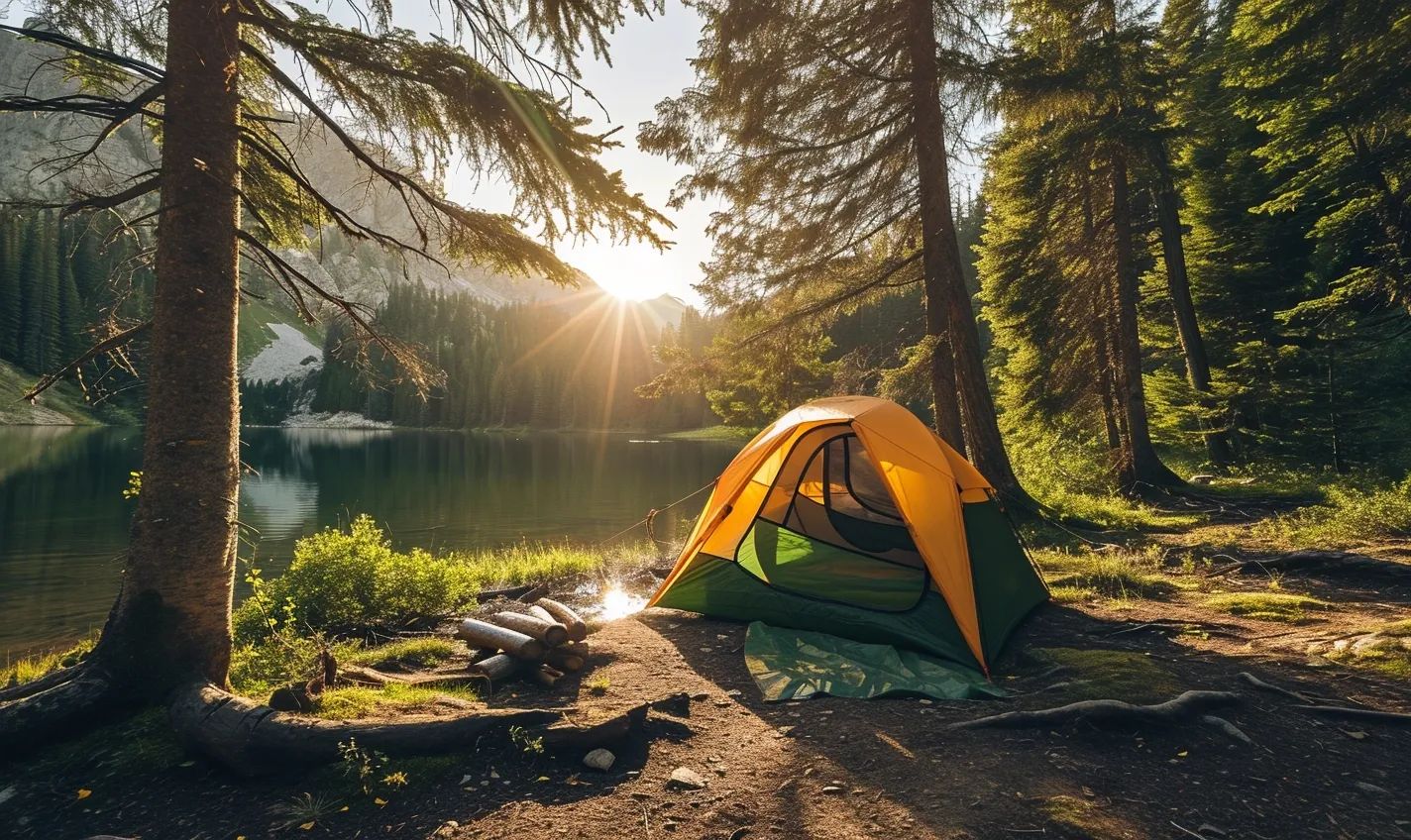
When planning a camping trip, carefully consider the size and level of the campsite you choose. Failing to do so can lead to several inconveniences and discomforts during your outdoor adventure. Here are some crucial points to keep in mind when selecting your campsite:
Space for Your Equipment
Before pitching your tent, ensure the camping area is spacious enough to accommodate all your equipment comfortably. Consider the size of your tent, the number of people camping with you, and any additional gear you may have, such as chairs, tables, or cooking equipment. Adequate space will ensure everyone has room to move around freely and enjoy their camping experience.
Level Ground
Choosing a level campsite is crucial for a good night’s sleep. Sleeping on uneven ground can be uncomfortable and might even lead to backaches or other discomforts. Look for areas with minimal slopes or lumps, and avoid pitching your tent on rocky or muddy terrain, as it can affect your overall camping experience.
Safety Considerations
Assess the surroundings of your campsite for any potential safety hazards. Avoid camping near dead or unstable trees that could pose a risk of falling branches or toppling over in strong winds. Additionally, evaluate the distance between your chosen site and any natural elements like rivers or cliffs to ensure the safety of yourself and your camping companions.
Accessible Amenities
Consider the proximity of essential amenities, such as water sources and restroom facilities, to your campsite. Look for a location close enough to easily access these amenities but not so close that you’ll be disturbed by foot traffic or noise. It’s also good to check if additional facilities, such as picnic tables or fire pits, are available nearby.
Privacy
While camping is a social activity for many, having some privacy is also essential. Choose a campsite that offers enough distance from neighboring campers to create a sense of tranquility. This way, you can fully immerse yourself in nature and enjoy the peaceful ambiance of the outdoors without feeling crowded.
By considering these factors and avoiding ignoring the size and level of the camping area, you’ll ensure a more enjoyable and comfortable camping experience for yourself and your fellow campers.
Not checking the accessibility and ease of reaching the campsite
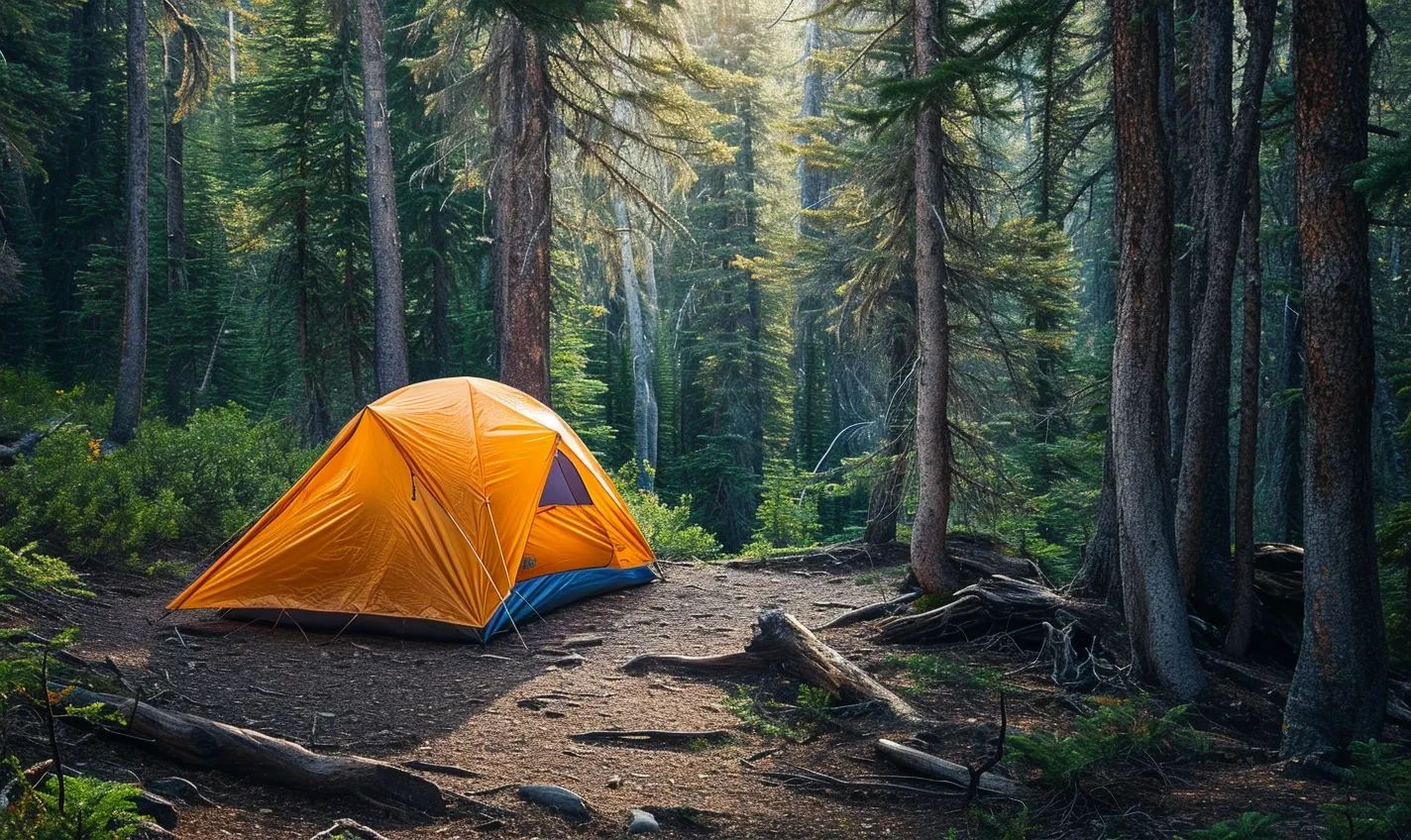
.Picture this: you’ve meticulously planned your camping trip, packed all your gear, and embarked on a journey to your chosen campsite, only to find out it’s tucked away in a remote location, accessible only by a treacherous, unpaved road. Avoid this common mistake by thoroughly researching the accessibility and ease of reaching your campsite before setting off.
Why is accessibility important?
Accessibility plays a crucial role in ensuring a smooth and enjoyable camping experience. Here are a few reasons why you should pay attention to this aspect:
- Convenience: A well-accessible campsite allows for easy transportation of camping gear, provisions, and other essentials. You wouldn’t want to hike for miles with a heavy backpack on rough terrain, would you?
- Safety: In case of emergencies or unforeseen circumstances, it’s essential to have quick access to medical facilities, transportation, or other necessary services. Being stranded in a remote location can pose significant challenges in such situations.
Factors to consider when checking accessibility
Here are a few factors you should consider while assessing the accessibility and ease of reaching your campsite:
- Distance: How far is the campsite from the nearest road or parking area? Long journeys can be tiresome, especially if you’re traveling with children or elderly members of the group.
- Road Conditions: Are the roads leading to the campsite well-maintained or require a high-clearance vehicle? Consider the condition of the streets and whether they are suitable for your mode of transportation.
- Obstacles: Are there any obstacles, such as narrow bridges, low-hanging branches, or steep inclines, that could make it challenging to reach the campsite? Assessing potential barriers beforehand can save you from unnecessary complications.
Mistakes happen, and some factors may escape our attention. However, taking the time to research and assess the accessibility and ease of reaching your campsite can go a long way in ensuring a seamless camping adventure. So, before you set off on your next camping trip, make sure your chosen campsite is easily accessible, allowing you to focus on embracing the wonders of nature and creating lasting memories with your loved ones.
Forgetting to analyze the condition and availability of restroom facilities
Choosing the perfect campsite involves several key considerations. From the proximity to water sources to the availability of amenities and activities, it is crucial to weigh all the factors before deciding. However, one critical mistake many campers make is forgetting to analyze the condition and availability of restroom facilities.
Why is this important?
Restroom facilities can make or break your camping experience. Imagine setting up camp in a beautiful location only to find out that the restrooms are poorly maintained or located too far away. This can be a major inconvenience, especially for families with children or elderly campers.
Here are some reasons why analyzing the condition and availability of restroom facilities is essential:
- Hygiene: Clean and well-maintained restrooms are necessary for proper hygiene during your camping trip. They provide a space to wash, discover the toilet, and dispose of waste safely.
- Convenience: Easy access to restrooms ensures convenience, allowing you to quickly respond to nature’s call without disrupting your camping routine. This is particularly important during the night or in adverse weather conditions.
- Comfort: Well-designed and properly equipped restrooms offer comfort that significantly enhances your camping experience. They provide a private space where you can freshen up and relax.
How to avoid this mistake?
To avoid the disappointment of poorly maintained or inaccessible restrooms, here are a few steps you can take:
- Research the campsite: Before making a reservation, read reviews and testimonials from previous campers. Pay close attention to any mentions of restroom facilities, cleanliness, and proximity to campsites.
- Check the campsite’s website: Most campgrounds provide information about their facilities on their website. Look for details regarding restroom availability, maintenance schedules, and any additional amenities they may offer.
- Contact the campsite directly: If you have specific concerns or questions about restroom facilities, contact the staff for clarification. They will be able to provide you with accurate and up-to-date information.
Considering the condition and availability of restroom facilities during your campsite selection process, you can ensure a more comfortable and enjoyable camping experience for yourself and your camping companions.
Disregarding the potential for bugs, mosquitoes, and other pests
Picture this: you arrive at your chosen campsite ready for a relaxing and enjoyable camping experience. But as soon as you set up your tent, you realize you are not alone. Bugs, mosquitoes, and other pests start swarming around, making it nearly impossible to enjoy your time in nature.
When selecting a campsite, many campers overlook the importance of considering the potential for pests. However, failing to do so can make your camping trip a nightmare. To ensure a peaceful and bug-free experience, here are some common mistakes to avoid:
Not researching the local environment
Different regions have different levels of pest activity, and some areas may be more prone to bugs and mosquitoes than others. Before selecting your campsite, take the time to research the local environment and any potential pest issues in the area. This will help you make an informed decision.
Ignoring the presence of standing water
Bugs and mosquitoes are often attracted to stagnant water sources. When scouting for a campsite, keep an eye out for any standing water nearby, such as ponds or marshes, as this can increase the likelihood of encountering pests.
Neglecting to check for pest control measures
Some campsites may have implemented pest control measures to minimize the presence of bugs and mosquitoes. Before making your final decision, inquire with the campground staff about any pest control efforts.
Overlooking the importance of insect repellent
Even if you choose a campsite with minimal pest activity, it’s always a good idea to come prepared with insect repellent. This will help ward off any unwanted visitors and allow you to fully enjoy your camping experience.
Failing to secure your food properly
Pests are often attracted to food, so it’s essential to store your provisions in a secure and airtight manner. This will prevent pests from ruining your food and deter them from lingering around your campsite.
Avoiding these common mistakes can ensure a bug-free and enjoyable camping experience. Remember, research to enjoy your camping experience fully, entirely eating lasting camping memories.
Choosing a campsite without considering the weather conditions
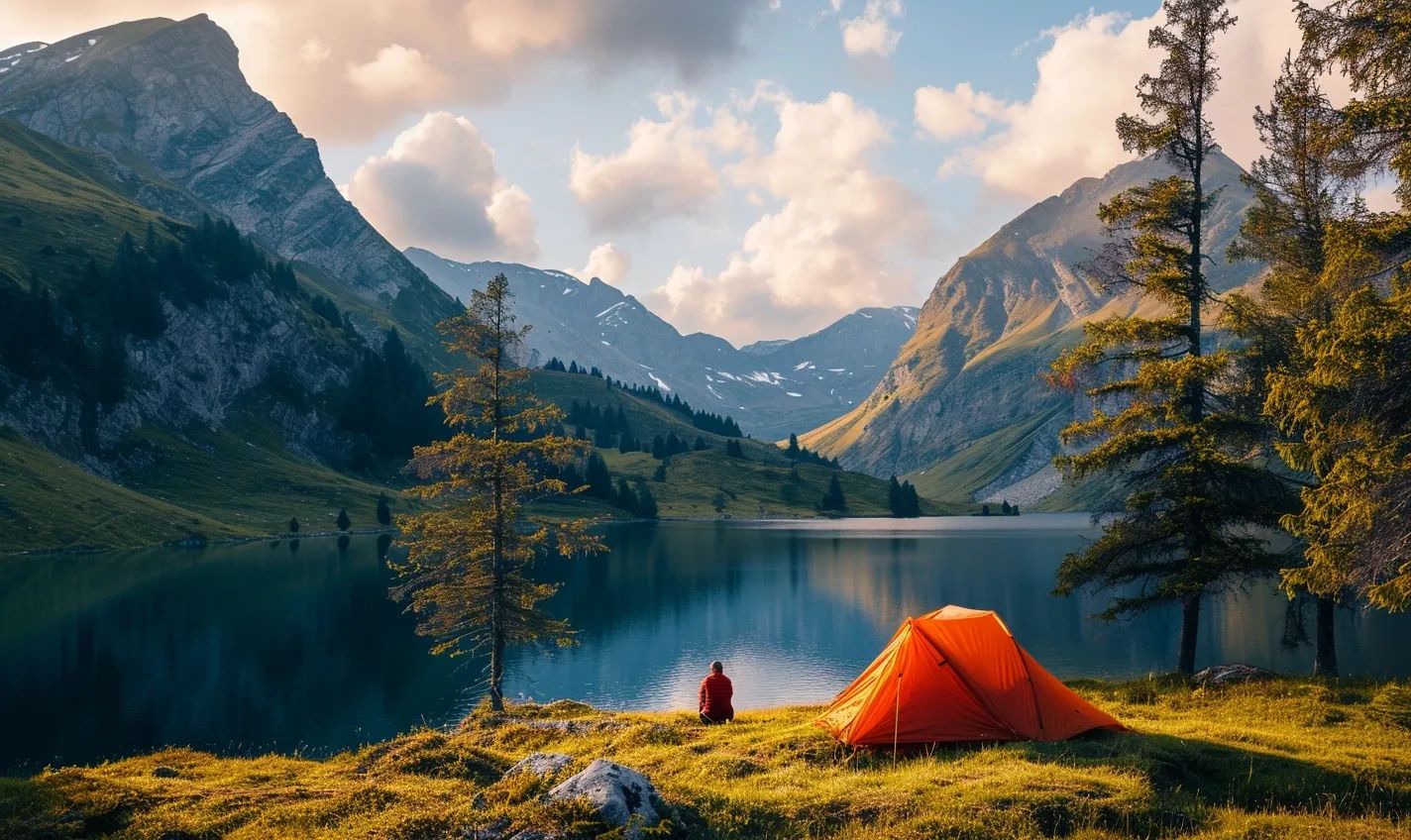
When it comes to camping, being prepared for the weather is crucial. Without considering the weather conditions, you may face unexpected challenges and discomfort during your trip. Here are some common mistakes to avoid when selecting your campsite:
Not researching the climate of the area
Before you choose a campsite, take the time to research the climate of the area. Are you heading to a region known for its sudden thunderstorms? Or perhaps you’re going to a place where temperatures drop significantly at night? By understanding the typical weather patterns, you can make an informed decision and choose a campsite that suits your needs.
Ignoring the forecast
Checking the weather forecast before your camping trip is essential. It allows you to pack appropriate clothing, gear, and equipment. Furthermore, it can help you decide which campsite to select more intelligently. If heavy rain or strong winds are expected, choosing a campsite with natural shelter or located in an area less prone to flooding is advisable.
Disregarding the microclimate of the campsite
Each campsite has its microclimate, which can differ from the surrounding area. Factors such as elevation, tree cover, and proximity to bodies of water can significantly impact the temperature and weather conditions. Consider these factors when choosing your campsite to ensure a comfortable and safe camping experience.
Not considering seasonal variations
.Seasonal variations can significantly impact the weather conditions at your chosen campsite. For instance, a sunny and pleasant location during summer may experience extreme heat or heavy snowfall during winter. Be mindful of the seasons and plan accordingly. Remember that some campsites may be closed or have limited facilities during certain seasons.
By avoiding these mistakes and considering the weather conditions, you can choose a campsite that enhances your camping experience rather than hinders it. Remember, a little preparation can go a long way in ensuring a successful and enjoyable camping trip.
Underestimating the Importance of Adequate Shade and Shelter
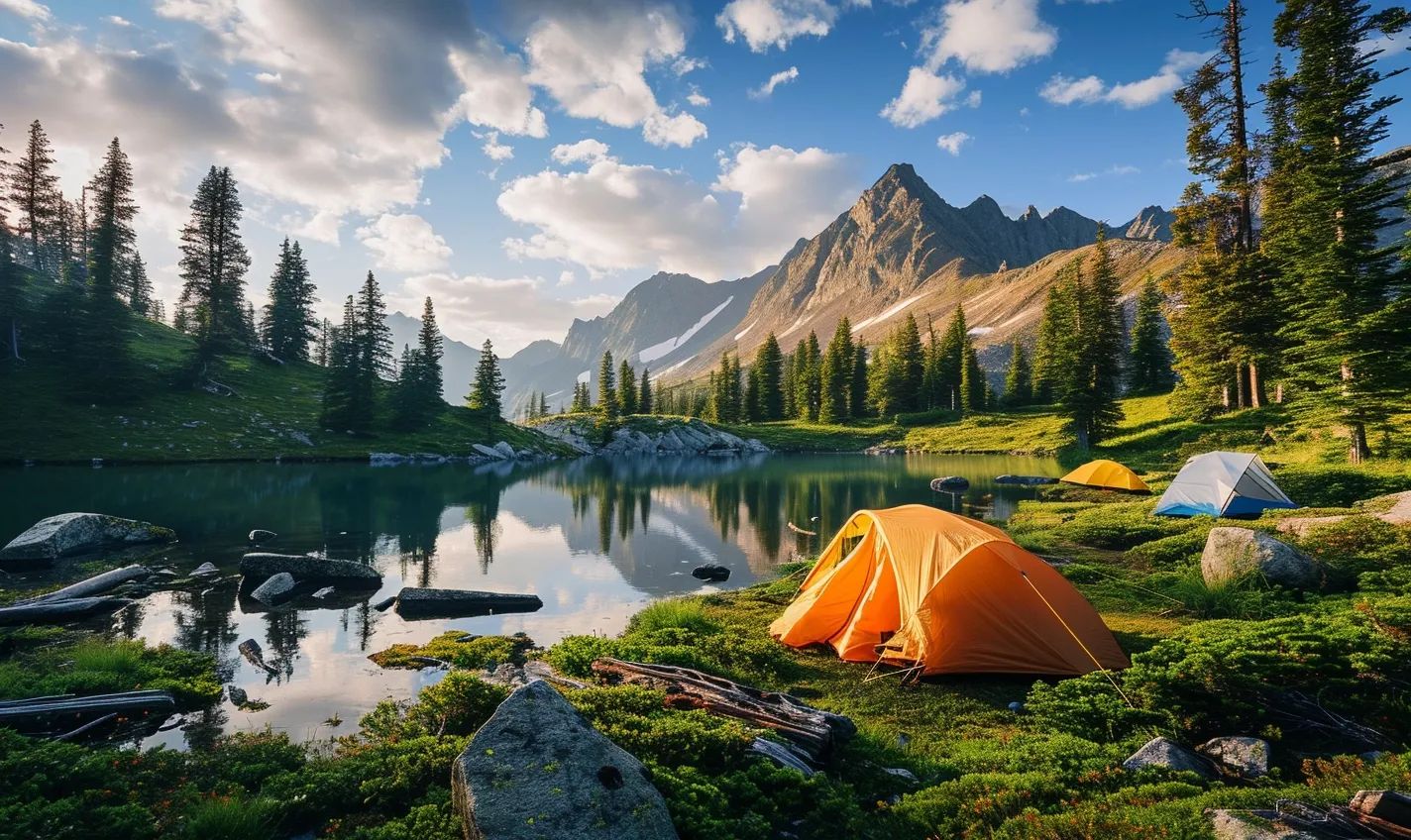
When selecting a campsite, it is crucial not to underestimate the importance of adequate shade and shelter. Camping without proper protection from the elements can turn a pleasant outdoor experience into a miserable one. Here are some mistakes to avoid when it comes to shade and shelter:
Choosing a Campsite without Tree Cover
One common mistake campers make is selecting a campsite in an open area with no trees or natural shade. While open areas may offer beautiful views, they also leave you vulnerable to direct sunlight and its harmful effects. Look for a site surrounded by trees or with a good amount of shade throughout the day.
Ignoring Wind Direction and Exposure
Wind can significantly impact your camping experience, making setting up tents, cooking meals, and even enjoying outdoor activities harder. Take note of the wind direction and choose a campsite protected from strong gusts. Additionally, consider the exposure of your site to the elements. Avoid areas fully exposed to the sun or prone to heavy rain and storms.
Not Considering the Size of Your Tent and Hammock
Ensure that the campsite you choose provides enough space for your camping gear, including your tent and hammock. Having enough room to set up your shelter comfortably and securely is essential. Avoid cramped areas that may limit your ability to move around or accommodate necessary camping equipment.
Overlooking the Availability of Picnic Tables and Shelters
Access to picnic tables and shelters can enhance your camping experience, especially during inclement weather or when you need a break from the sun. Check if your chosen campsite offers these amenities or if you must bring your portable options.
Not Having Adequate Rain Protection
While it’s impossible to predict the weather completely, it’s essential to consider rain protection when selecting your campsite. Avoid areas that are prone to flooding or lack natural drainage. Setting up your tent in an elevated spot is also a good idea to minimize the risk of water entering your shelter.
Avoiding these mistakes can ensure that your camping experience is comfortable and enjoyable, regardless of the weather conditions. Remember to research your chosen campsite thoroughly, considering factors like shade, wind exposure, and available amenities, to make the most of your outdoor adventure.
Making assumptions about the availability of amenities and activities
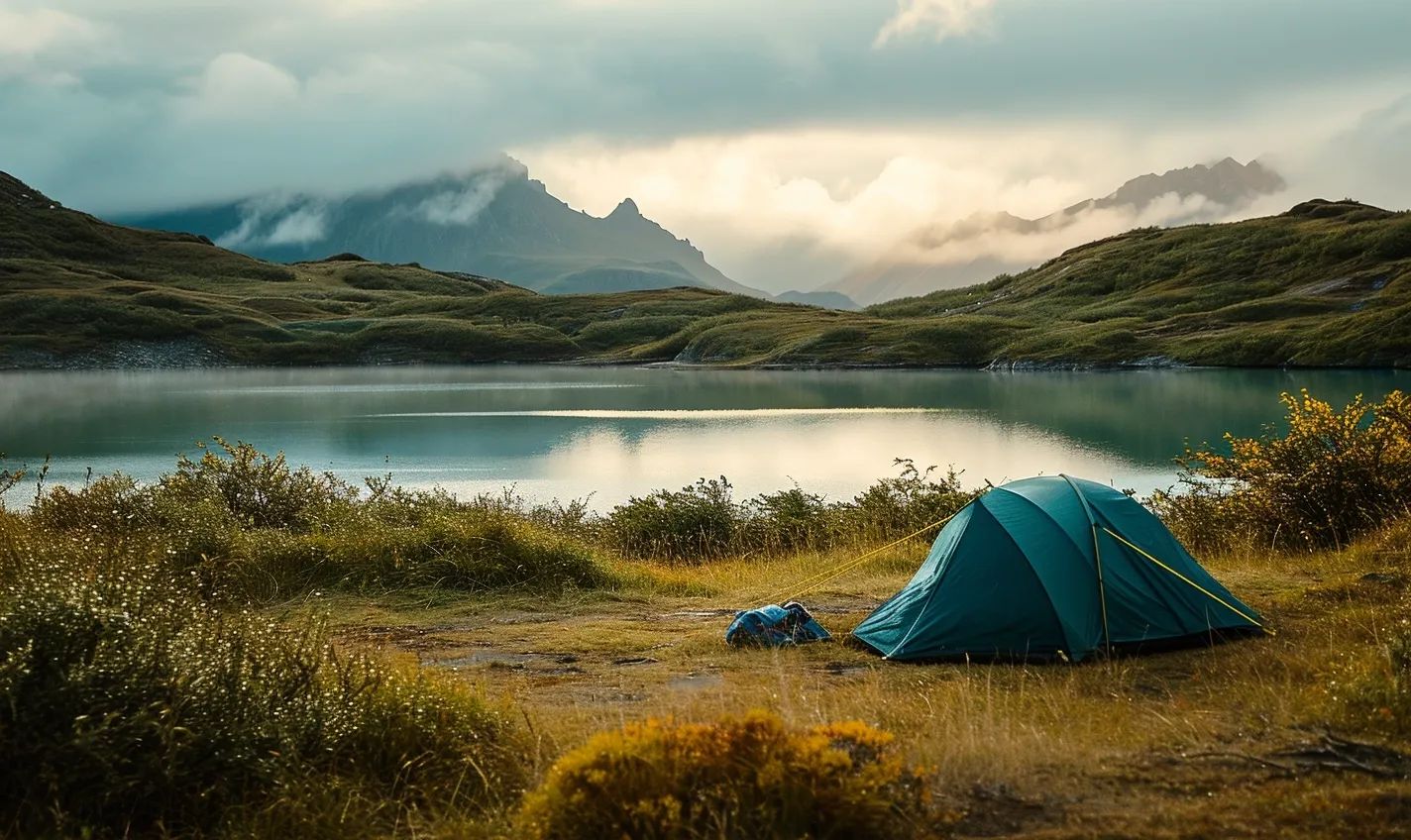
When selecting a campsite for your outdoor adventure, it’s essential to consider the availability of amenities and activities. Making assumptions about these factors can lead to disappointment and frustration during your camping trip. Here are some common mistakes to avoid:
Not researching the amenities
Assuming that every campsite offers the same amenities can be a big mistake. Some campsites may have showers, toilets, picnic tables, and fire pits, while others may not. Before choosing a campsite, thoroughly research and check their website or call their office to ensure they have the required amenities.
Overlooking activity options
When selecting a campsite, it’s crucial to consider the activities available in the area. Whether you enjoy hiking trails, fishing spots, or water sports, choose a campsite that offers the activities you are interested in. Assumptions about the availability of specific activities could leave you with limited options on your camping trip.
Not considering seasonal restrictions
.Some campsites may have seasonal restrictions on specific amenities or activities. For example, swimming areas may be closed during the winter, or hiking trails may have limited access during certain months. Avoid assuming that all amenities and activities will be available throughout the year, and check for any seasonal restrictions before making your final decision.
Failing to check for reservations
Assuming that a campsite will always be available can lead to disappointment. Many popular campgrounds require reservations, especially during peak seasons. Before heading out, check if the campsite requires reservations and book your spot in advance to avoid unnecessary stress and frustration.
Disregarding nearby attractions
While selecting a campsite, don’t forget to consider the availability of nearby attractions. Whether it’s a scenic viewpoint, a historical site, or a local town to explore, having interesting attractions nearby can enhance your camping experience. Research the area to discover the available attractions and choose a campsite with easy access.
By avoiding these mistakes and taking the time to research and plan, you can ensure that your camping experience is enjoyable and free from unnecessary surprises.
Conclusion
Choosing the perfect campsite is essential for a successful camping trip. By avoiding common mistakes, you can ensure a comfortable and enjoyable experience in the great outdoors. When selecting your campsite, consider location, terrain, amenities, and safety. Plan, do thorough research, and use online resources and reviews to help you make an informed decision. Avoid overcrowded areas, inadequate facilities, and hazardous surroundings. Always double-check your reservation details and arrive early to secure the best spot. By avoiding these ten campsite selection mistakes, you’ll be well on your way to creating memorable camping adventures filled with peace, tranquility, and breathtaking views.
Frequently Asked Questions (FAQs)
What are the top mistakes to avoid when selecting a campsite?
There are several common mistakes to avoid when choosing your campsite to ensure a successful camping experience:
1. Is it a mistake to choose a campsite without proper research?
Yes, it is essential to research the campsite before your visit. Check for amenities, location, nearby attractions, and reviews from previous campers.
2. Can selecting a campsite without considering the weather be a mistake?
Absolutely! Weather conditions can significantly impact your camping experience. Ensure your selected campsite is suitable for the weather during your stay.
3. Is choosing a campsite that suits your camping style important?
Yes, selecting a campsite that aligns with your camping style is crucial. Identify whether you prefer a remote wilderness experience or a campsite with amenities like electricity and showers.
4. How important is the campsite’s proximity to water sources?
Access to water sources is essential. Ensure your campsite is near a freshwater source for drinking, cooking, and other camping needs.
5. Can selecting a campsite without considering the level of privacy be a mistake?
If you value privacy, choosing a campsite that offers sufficient distance between neighboring sites is essential to avoid feeling crowded.
6. Is it a mistake to overlook the availability of shade at a campsite?
Definitely! Adequate shade at a campsite can relieve the sun’s heat and make your camping experience more comfortable, especially during the hot summer.







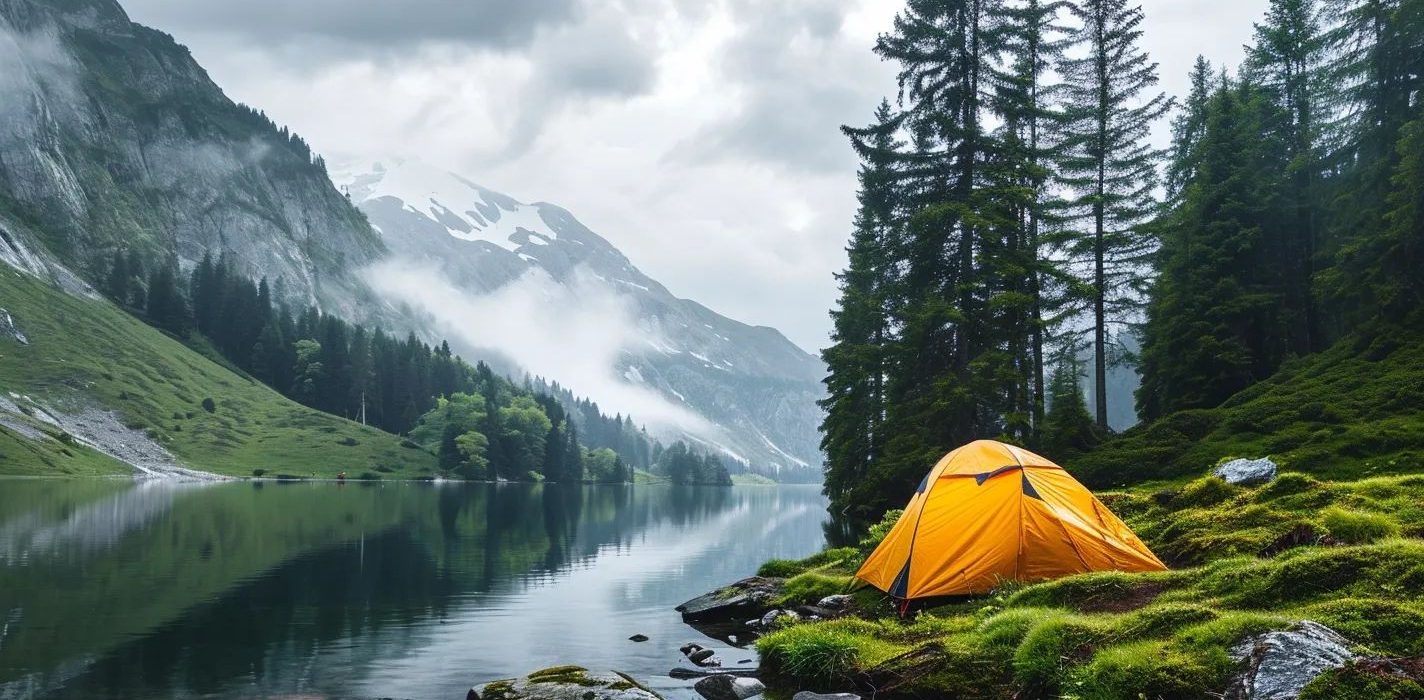
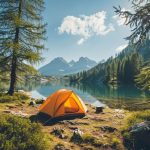
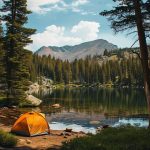
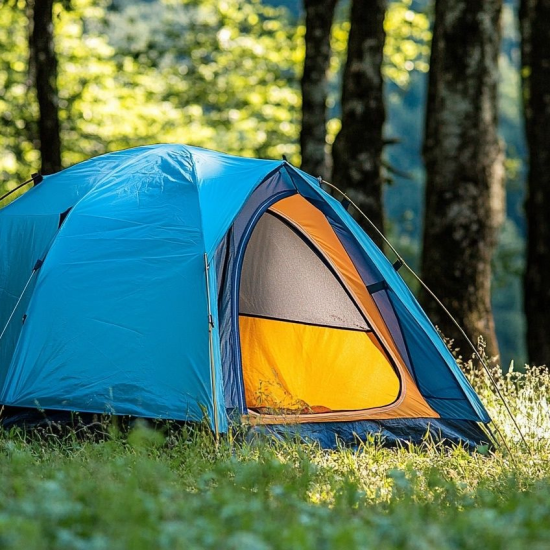
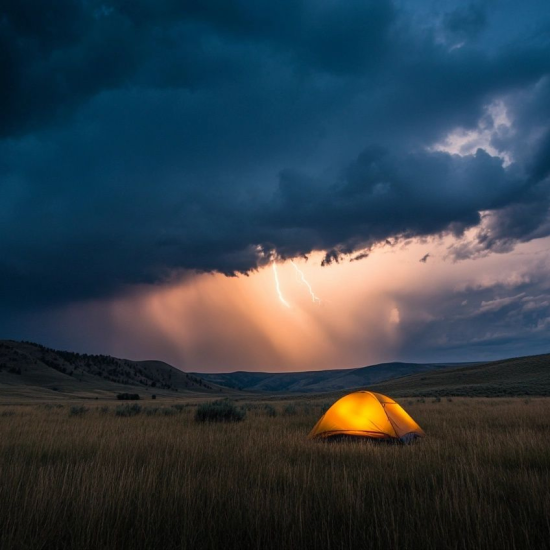
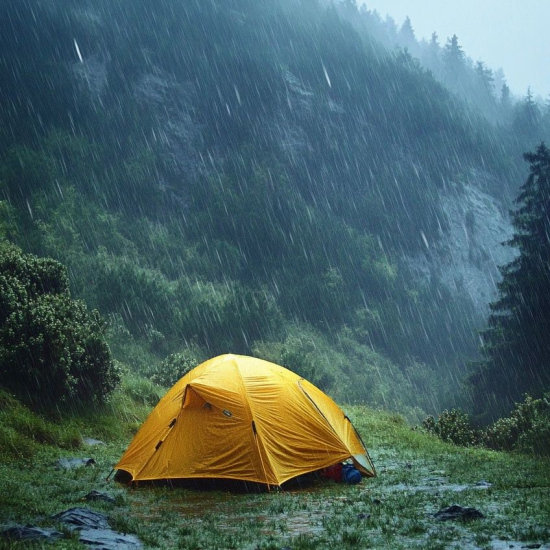
No Comment! Be the first one.